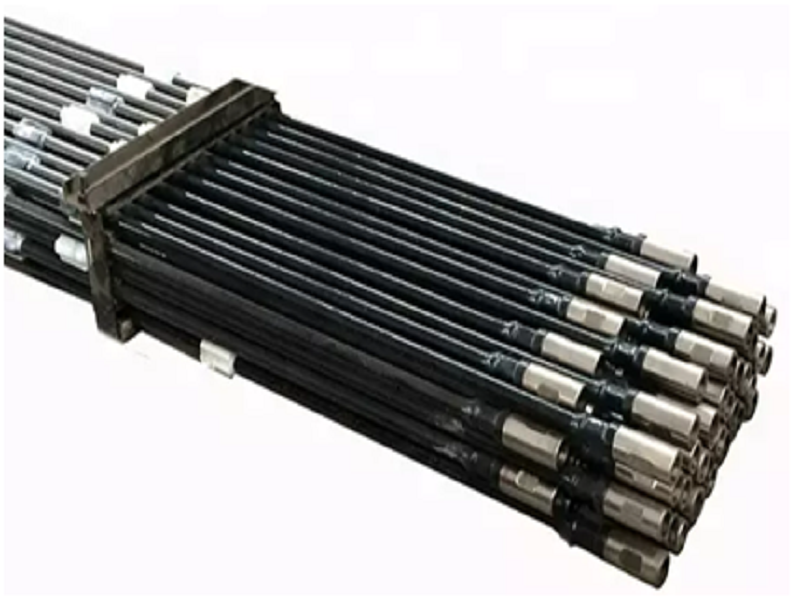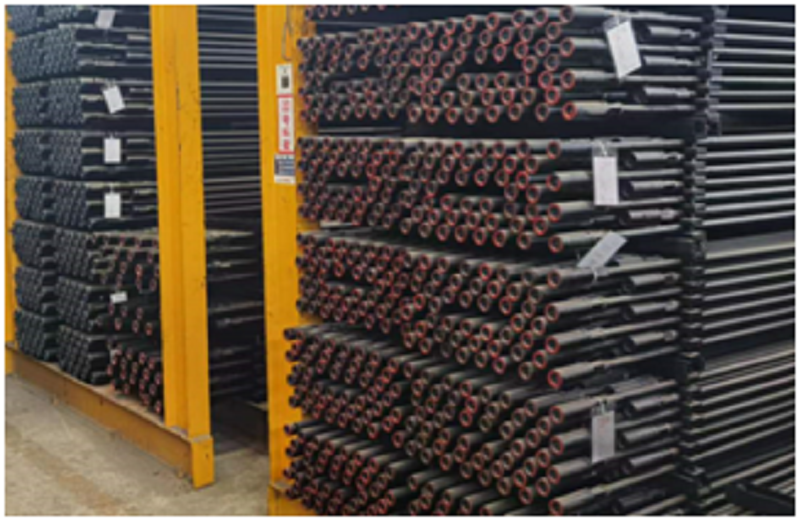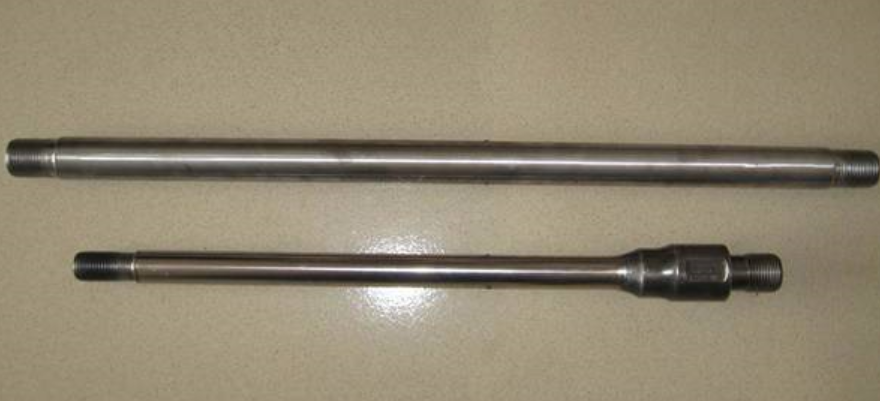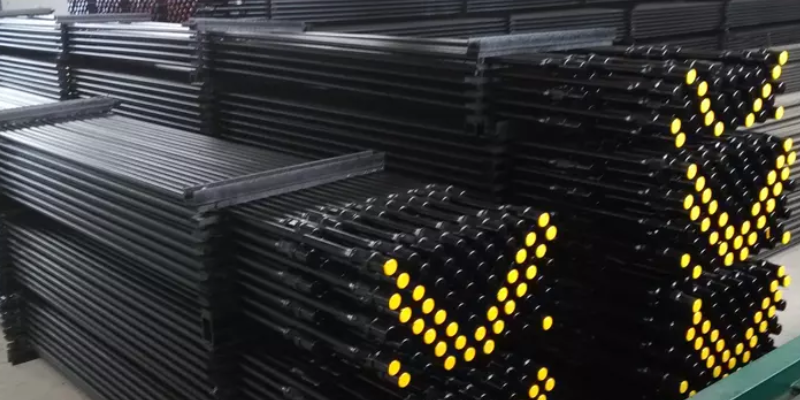Get Conventional Sucker rod from Sunrise
The anti-corrosion sucker rod

The sucker rod is a long and thin rod of the pumping well, which is connected with the polished rod on the top and the oil well pump on the bottom to transmit power. This means the sucker rod plays an essential part of oilfield production. As a result, the quality and working life of Sucker rod are closely tied to the safety and cost of oilfield production.
The composition of crude oil varies greatly around the world, and the working conditions of oil wells are also different, but corrosion phenomena are common in oilfield production. The sucker rod is mostly made of metal, such as steel, so that the corrosion degree naturally becomes a factor that cannot be ignored in the operation of the sucker rod. This paper puts forward the following suggestions on how to select sucker rods with good corrosion resistance and high cost performance.
First, define corrosive substances and contents.
First, it is necessary to define corrosive substances and their content in oil wells, which determine the material and production process of the sucker rod protection layer. Corrosive substances are usually acidic gas or liquid. Common corrosive gases include hydrogen sulfide and carbon dioxide in formation fluid, hydrogen sulfide generated by microbial and sulfate action in drilling fluid, and oxygen dissolved in drilling fluid. Generally, the corrosion degree caused by corrosive liquid with different concentration or dissolved amount is different
Second, make sure the operating temperature.
Second, the operating temperature of the oil well should be clear.If other conditions remain unchanged, the corrosion degree of the sucker rod will increase with the temperature of the well. However, some corrosion resistant methods of the sucker rod have definite requirements of the temperature of operating environment. For example, HDPE coated sucker rod, AKA High Density Polyethylene coated sucker rod, should not exceed 140 degrees℃ for max working temperature.
Third, make clear the operating temperature and load.
Third, it is important to know the operating temperature and load of the well. This is closely related to the operating environment of the rod body.
Fourth, determine the sucker rod strength grade
Fourth, it is necessary to determine the strength grade of sucker rod, which determines the strength and cost of sucker rod matrix. The grade of sucker rod includes K, D, KD or high strength such as H grade. The corrosion resistance of sucker rod with different strength is not the same. However, corrosion protection is still required in some cases to ensure safe operation.
Fifth, determine whether there is wear problem
Fifth, it is necessary to make sure whether there is sucker rod wear in oil wells. If both corrosion and wear appear frequently, wear resistance should be fully considered when choosing anti-corrosion sucker rod as well. For example, HDPE Liner tubing can resist both corrosion and wear, and its wear resistance is much better than that of ordinary steel.
Understanding the above five points is beneficial for users to select the sucker rod with best anti-corrosion effect or best economic effect. At present, there are many kinds of anti-corrosion and anti-abrasion sucker rods on the market. A brief introduction is as follows.
1.HDPE coated sucker rod
By using HDPE resin to fully coat the sucker rod body, the anti-corrosion and anti-abrasion of the sucker rod is realized. The service temperature is not more than 100℃, and it can be used in both oil well and water well.
- Tungsten-plated sucker rod
It adopts electroplating technology to apply extremely thin tungsten alloy coating on sucker rod to achieve anti-corrosion effect. It has the characteristics of high hardness, acid and alkali corrosion resistance and low friction coefficient.Suitable when working temperature is not exceeding 390℃.
3.Composited-plated sucker rod
Composite plating is to add insoluble particles (such as ceramic particles) to the plating solution on the basis of electroplating and electroless plating, so that the particles are deposited together with coating, and the coating has the characteristics of both metal coating and particles.
Compared with the traditional tungsten plated sucker rod, the corrosion resistance and wear resistance of the composite plated sucker rod are obviously improved. The composited-plated sucker rod can be used for corrosion and wear of water injection wells, oil production wells, oil transmission surface pipelines, etc.
4.FRP(fiberglass-reinforced plastic) sucker rod
Compared with metal materials, FRP products have unique advantages such as light weight, corrosion resistance and good fatigue performance. It is suitable for water injection wells, oil production wells, oil transmission surface pipelines, etc. when working temperature is not higher than 100℃.




